Garlic bread is a popular side dish that complements a wide range of meals, from pastas to soups. It is traditionally made by baking in an oven, which gives it a crispy texture and golden surface. However, you might not always have access to an oven or the time it requires to preheat and bake. In such situations, using a microwave can be a tempting alternative. This article will address whether you can cook garlic bread in the microwave without compromising its delectable taste and satisfying crunch.
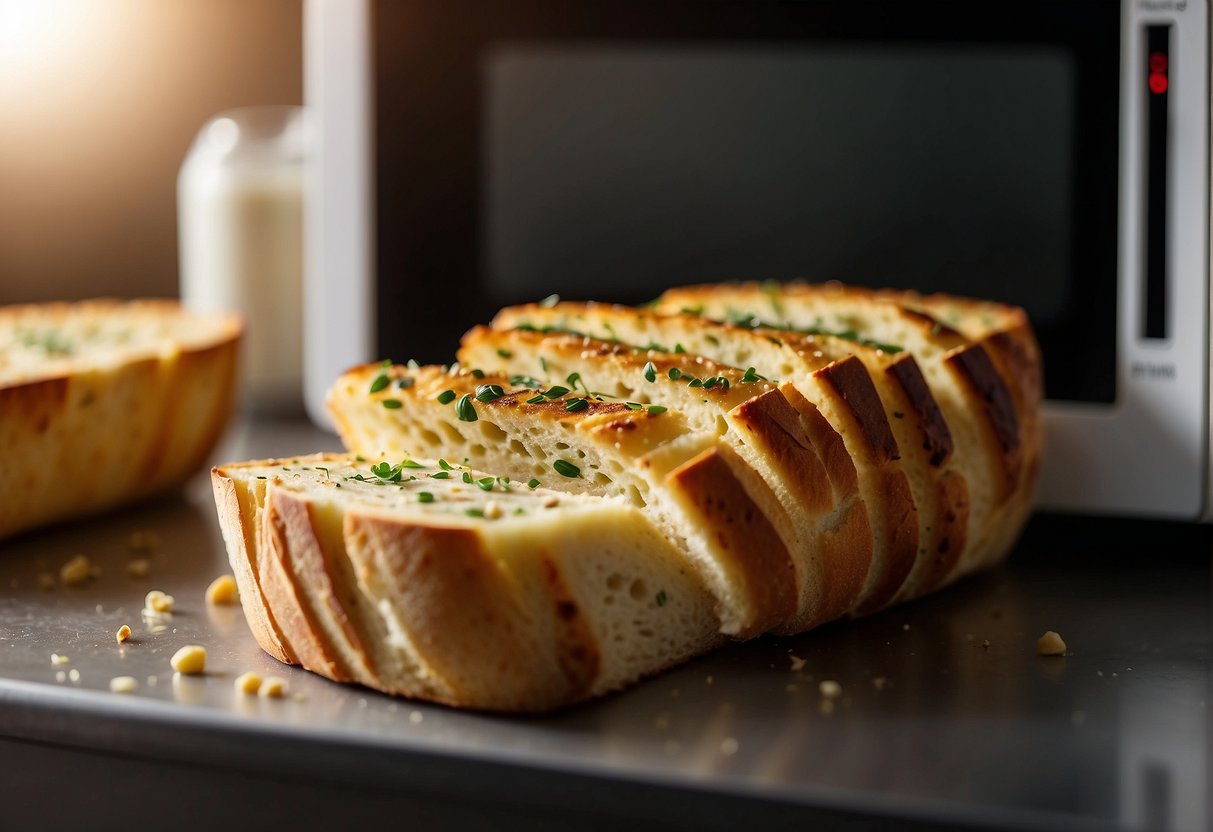
Understanding how microwave ovens work is crucial when attempting to cook anything in them, garlic bread included. Microwaves cook food by causing water molecules to vibrate, producing heat. Since this method differs significantly from the dry heat of an oven, adjustments must be made. Ensuring that the garlic bread becomes crispy rather than soggy requires specific preparation steps before it enters the microwave.
Once you know how to prepare garlic bread for microwave cooking, the process can be quite straightforward. After the preparation, which often involves wrapping the bread properly to create steam and protect its moisture, the microwave can turn your uncooked or pre-cooked garlic bread into a warm and palatable dish. This method is especially useful for those who need to save time or don’t have an oven at their disposal.
Key Takeaways
- Microwaves can be used to cook garlic bread, offering a time-saving alternative to ovens.
- Proper preparation steps are necessary to ensure the garlic bread turns out well in the microwave.
- Microwave-cooked garlic bread can achieve a satisfactory taste and texture with correct techniques.
Understanding Microwaves
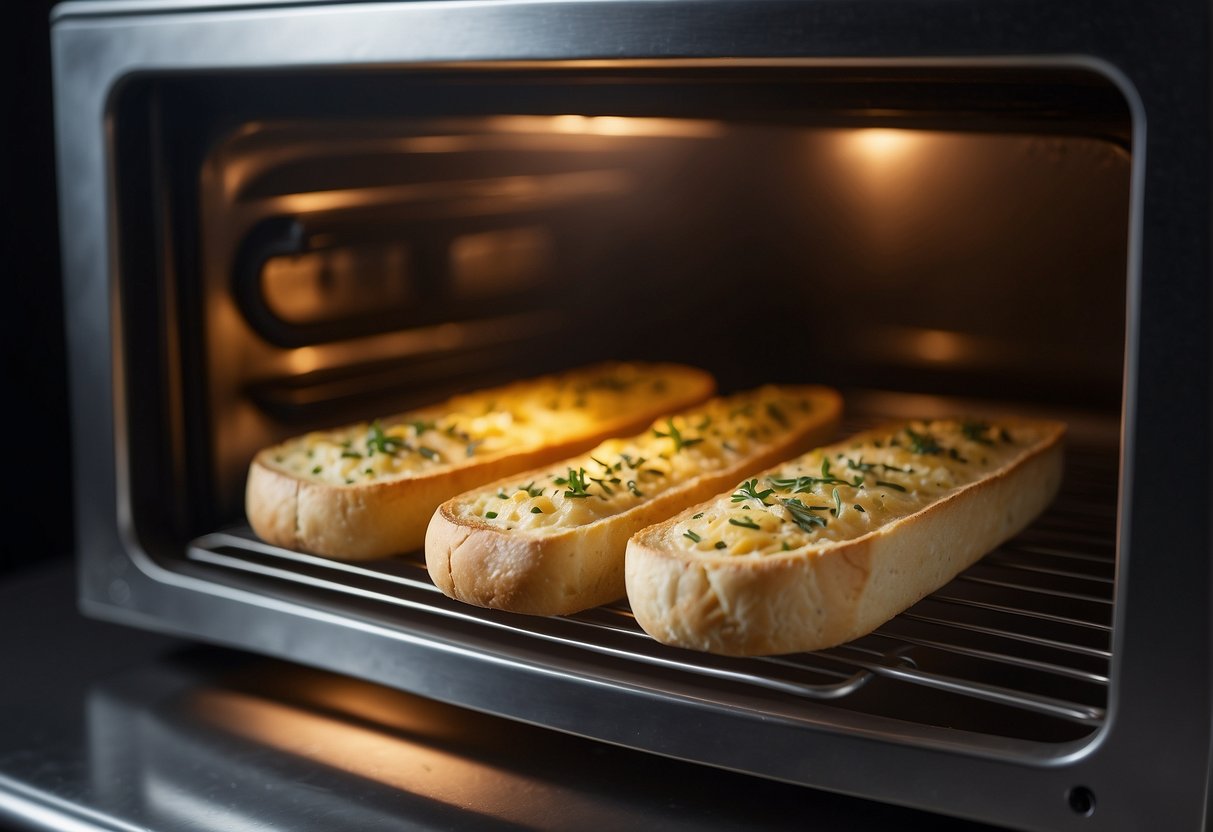
Before diving into cooking with microwaves, it’s important you understand how they operate and the safety measures you should follow.
How Microwaves Work
When you use a microwave, you are using a form of electromagnetic radiation. These microwaves excite the water molecules in your food, causing them to vibrate rapidly. This vibration generates heat through friction, which in turn cooks or warms up your food. Here’s a simple breakdown:
- Source: A magnetron generates microwaves.
- Transmission: These waves are directed into the food compartment.
- Interaction: The microwaves engage with water molecules in your food.
- Heating: Molecular vibration from this interaction produces heat.
This process is quick and usually efficient, making microwaves a popular kitchen appliance.
Safety Considerations
When cooking with a microwave, your safety is paramount. The following are essential guidelines to keep in mind:
- Metal: Avoid placing metal in the microwave, as it can cause sparks and potentially start a fire.
- Food Container: Use microwave-safe containers to avoid chemical leakage or container damage.
- Sealing: Don’t seal food tightly in a container as pressure build-up can cause spills or explosions.
- Monitoring: Always stay close by and monitor the cooking process to prevent overheating.
Remember these simple rules to ensure a safe and pleasant cooking experience with your microwave.
Preparing Garlic Bread for the Microwave
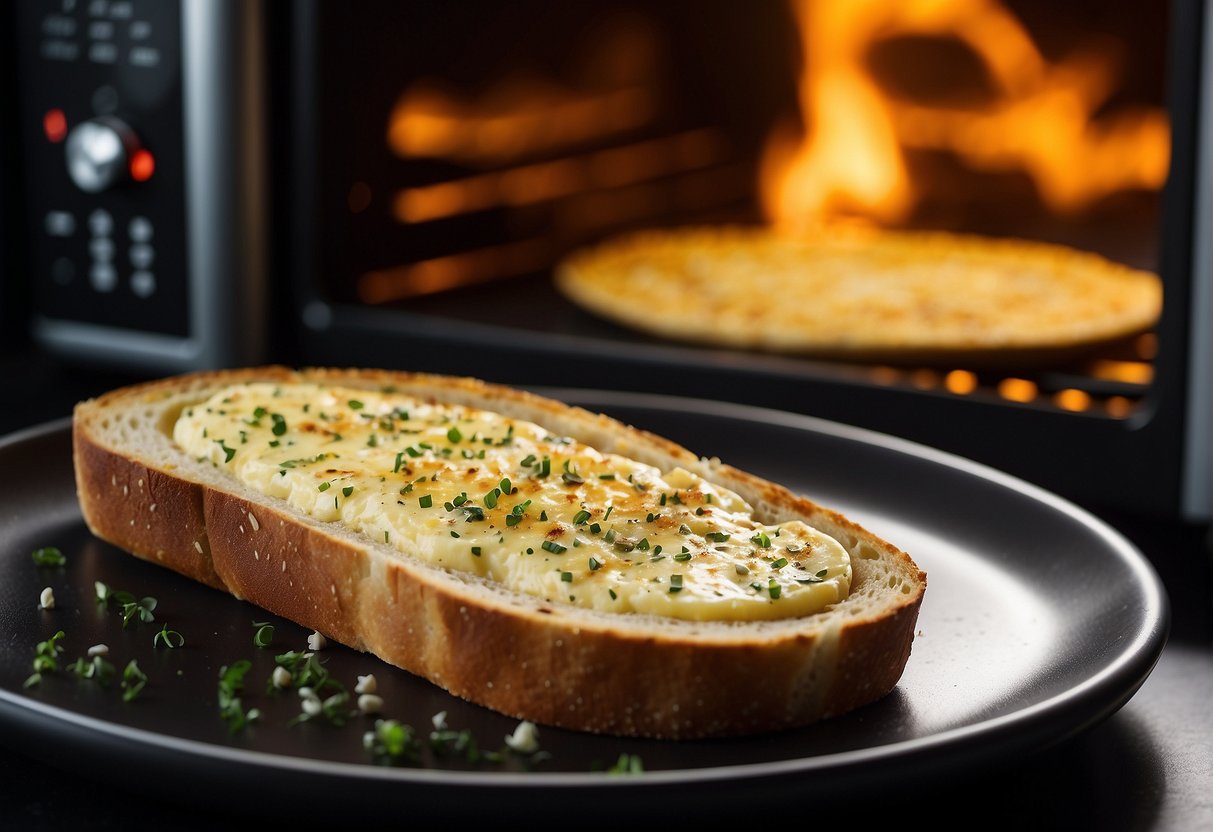
To successfully prepare garlic bread in the microwave, gather the necessary ingredients and ensure you have microwave-safe equipment on hand.
Ingredients Needed
- Bread: Choose a pre-sliced loaf for uniform pieces or a whole loaf that you can slice yourself.
- Butter: Softened to spread easily on your bread slices.
- Garlic: Fresh cloves that you can mince, or pre-minced garlic for convenience.
- Parsley: Fresh or dried, for garnish and added flavor.
- Cheese: Grated Parmesan or mozzarella are popular options.
Microwave-Safe Equipment
- Microwave-safe plate: To place your garlic bread on while cooking.
- Microwave-safe cover or lid: Optional, but helpful to prevent splattering and to keep moisture in.
Cooking Garlic Bread in the Microwave
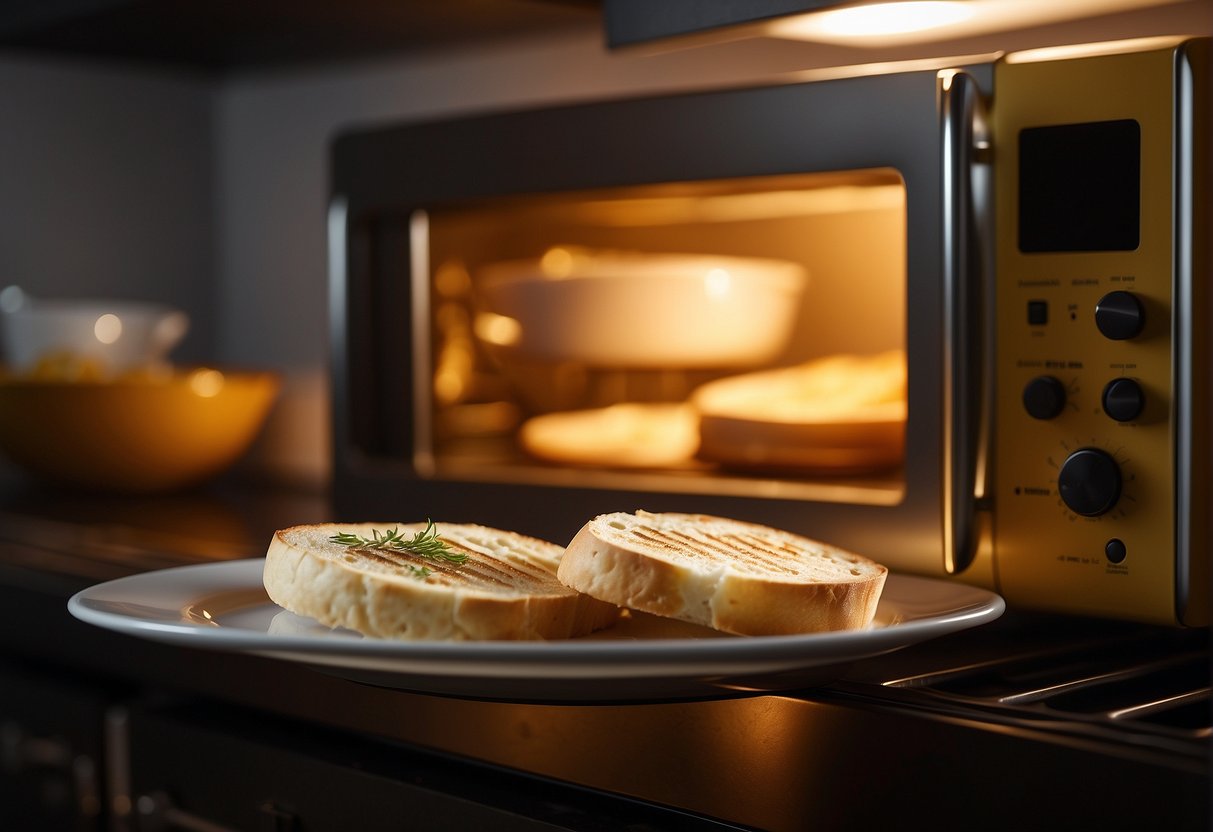
Microwaving garlic bread is a quick and convenient method. It’s important to monitor cooking times to avoid sogginess.
Step-by-Step Instructions
- Preheat your microwave: While not all microwaves have a preheat setting, if yours does, set it to 350 degrees Fahrenheit.
- Prepare the garlic bread: Take your garlic bread and wrap it in a microwave-safe paper towel. This will help to absorb excess moisture.
- Place the bread in the microwave: Put the wrapped garlic bread on a microwave-safe dish.
- Heat it up: Microwave the bread on high for about 30 seconds.
- Check it: Carefully touch the bread. If it’s not warm enough, continue to heat it in 10-second intervals until it reaches your desired temperature.
Timing and Power Levels
- Garlic Bread Type: Fresh or pre-made
- Power Level: High (100% power)
- Initial Time: 30 seconds
- Additional Time: 10-second intervals
- Max Total Time: 1 minute (to prevent overcooking)
Remember that microwaves vary, and power levels can affect outcomes. Always monitor your garlic bread to avoid overcooking.
Final Touches and Serving
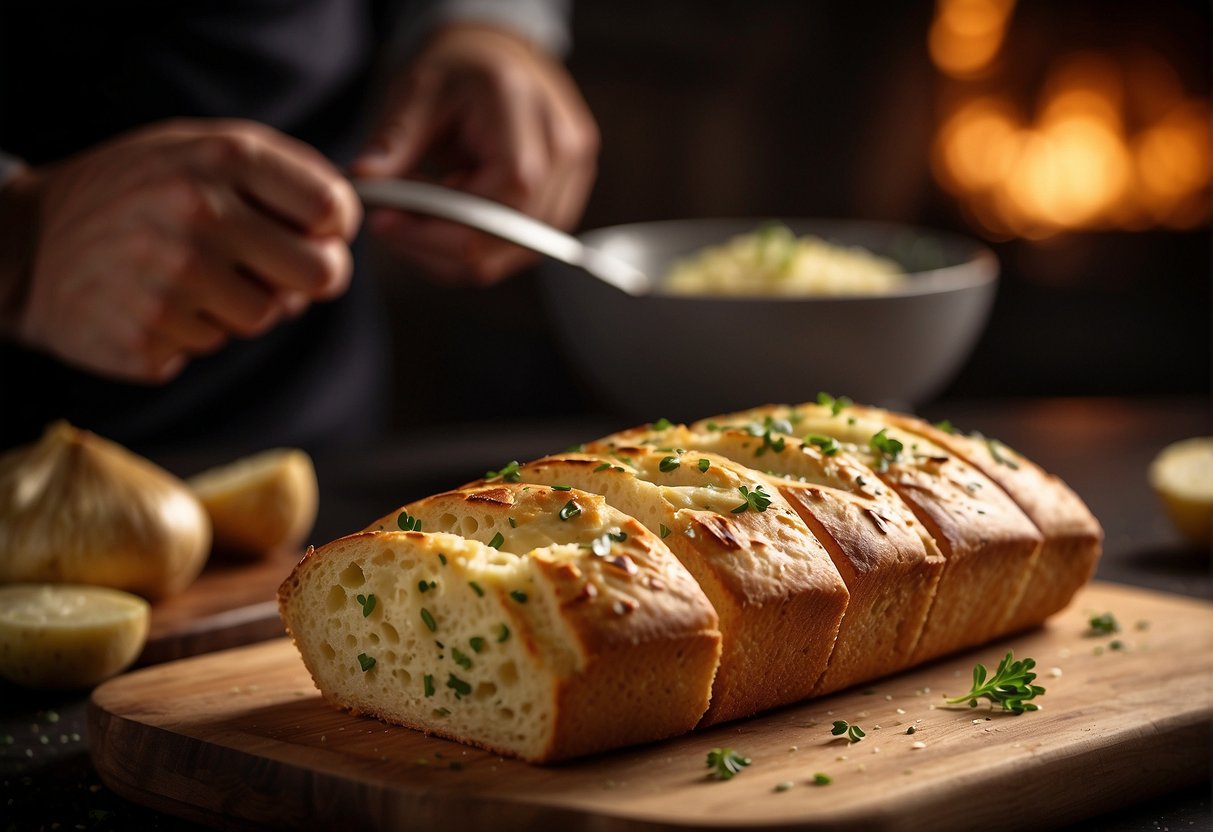
When your garlic bread emerges from the microwave, a few final touches can enhance its flavor and appearance before it’s ready to be served.
Checking for Doneness
You’ll want to ensure the garlic bread is heated evenly throughout. It should be warm to the touch, and if you included cheese, it should be melted. If the bread isn’t evenly warmed or the cheese hasn’t melted, you may need to microwave it for an additional 15-second interval.
Serving Suggestions
Once your garlic bread is ready, consider the following to make the most of your dish:
- Texture: For a crispier edge, you could toast the bread in a pan for a minute or two on each side.
- Accompaniments: Pair your garlic bread with a complementary dish like pasta, soup, or salad to complete your meal.
Remember to serve your garlic bread immediately while it’s still warm to enjoy its soft center and flavorful garlic topping.
Frequently Asked Questions
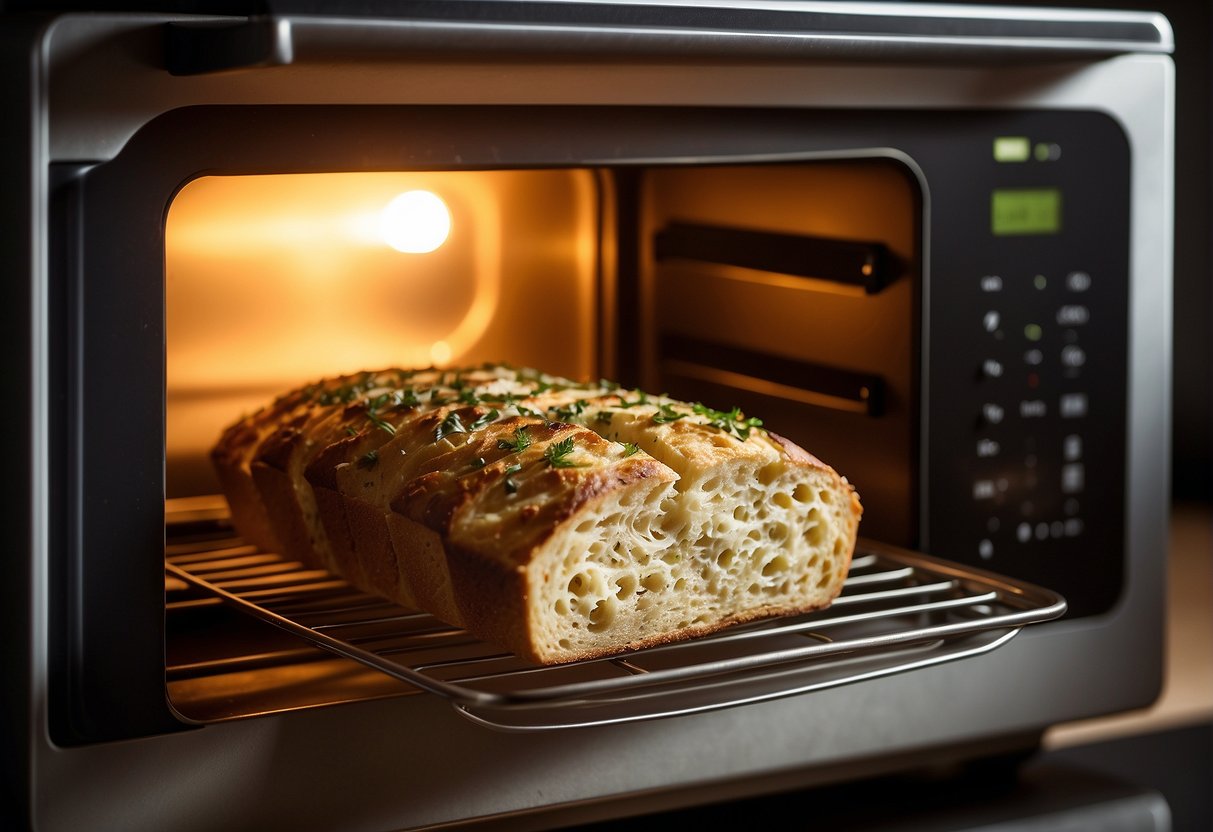
Microwaving garlic bread can be quick and convenient, but to ensure flavorful and enjoyable results, follow these simple methods tailored for your microwave.
What’s the best way to microwave garlic bread with butter?
To microwave garlic bread with butter, spread butter and garlic evenly over the bread. Place it on a microwave-safe plate, cover with a damp paper towel to maintain moisture, and microwave on high for about 10-15 seconds per slice. Check periodically to avoid overcooking.
Is it possible to cook store-bought microwavable garlic bread?
Yes, store-bought microwavable garlic bread can be cooked in the microwave. Simply follow the instructions on the packaging, typically involving heating it on high for a specified time, usually around 1-3 minutes, depending on the wattage of your microwave.
How do you properly reheat garlic bread in the microwave?
Wrap your garlic bread in a damp paper towel to keep it moist and then heat it in the microwave in 10-second intervals, checking for warmth and texture between each interval to prevent it from becoming overly hard or chewy.
Can you heat up frozen garlic bread in the microwave, and how?
To heat frozen garlic bread, wrap it in a damp paper towel and microwave on a high setting for about 30-45 seconds per slice. If it’s not heated evenly, continue microwaving in short bursts until it reaches your desired temperature.
What are the steps to make cheese garlic bread using a microwave?
Start by spreading garlic butter on your bread and adding a layer of shredded cheese. Put the bread on a microwave-safe dish and cover with a paper towel. Microwave on high for 20-30 seconds or until the cheese is melted and bubbly, checking often to avoid overheating.
How can you cook garlic bread in the microwave if you don’t have an oven?
To cook garlic bread without an oven, simply prepare your slices of bread with garlic butter, place them on a microwave-safe plate, and cover with a damp paper towel. Microwave them on high for about 10-15 seconds per slice, checking frequently to make sure they don’t get too crisp.
